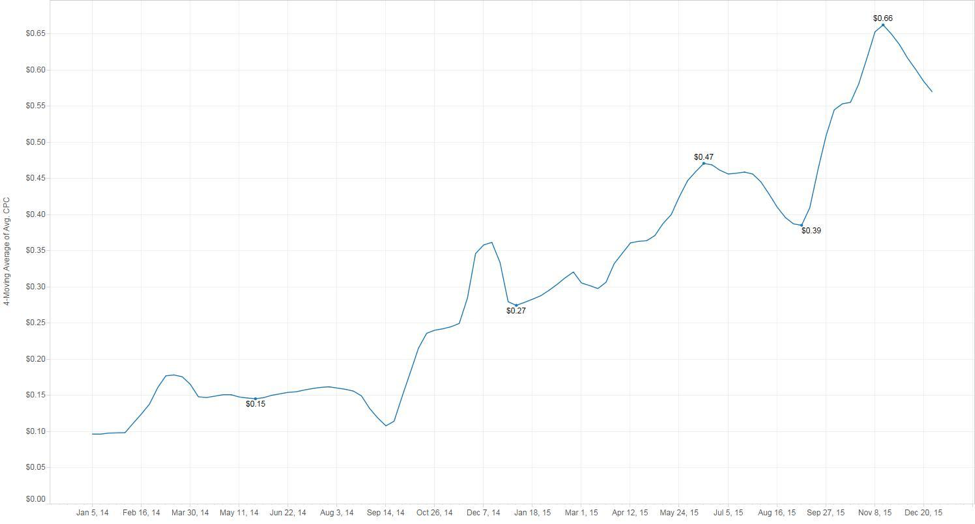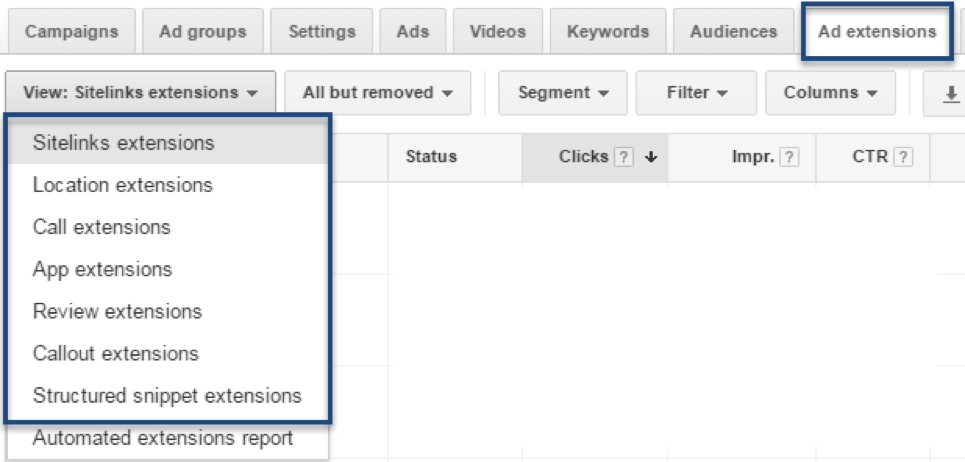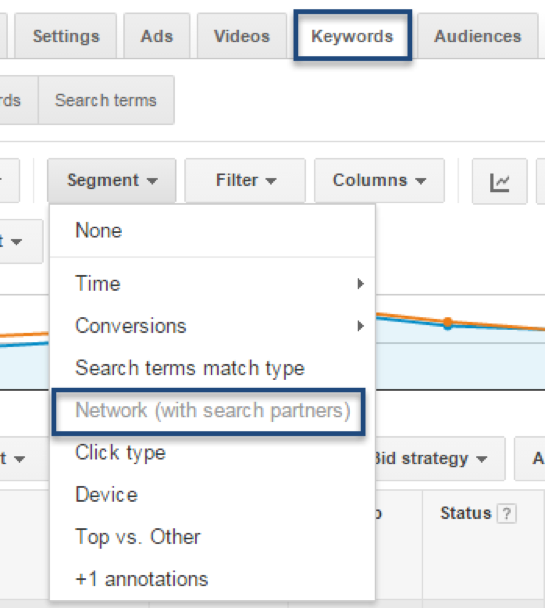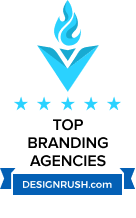Perhaps one of the greatest trepidations of any PPC strategist is that brand CPCs on core brand terms will start to increase and then stay on that path, rising with time. Below is an example of exactly such an increase, where the exact match of a client’s core brand term has been steadily on the rise since 2014.
 Chart of Rising CPC
Chart of Rising CPC
The impact of such an increase in brand CPCs on a PPC account is immediate and dramatic. With a 25% increase in CPCs comes a 25% increase in cost, just like that. In the last year, we have seen some dramatic increases in avg. CPCs on brand terms. The rises have not been as precipitous in every account but I would go as far to ventures that you’d be hard pressed to find an AdWords account in which brand CPCs have NOT increased in 2015. The report that helped to validate this visible trend in rising avg. CPCs in 2015 was the Q2 2015 Merkle report. What can you do, as a strategist, when you begin to see your cash cow brand terms shoot up in cost like this?
Unfortunately, brand CPC increases appear to be a permanent fixture and something that marketers not only need to get used to but also become accustomed to managing. I think I can so far as to say that bidding on brand terms is somewhat of a no brainer in the PPC business.
[Tweet ""Bidding on brand terms is a no brainer for #PPC!" Find out how to combat rising Brand CPC."]
It is a key driver of profitability and positive ROI on paid search campaigns.
Avg. CPCs on Brand are up, now what?
It is important to get a mathematical handle on the situation before you begin to take optimization actions to improve rising avg. CPCs on brand terms.
Step 1: Can you afford it? Is Actual CPC > Break-even CPC?
You need to understand whether the new avg. CPC environment in which you are operating is within your break-even CPC range.
This can be done using the following formula:
Break-even CPC = (Profit per Conversion / Desired ROAS) * Conversion Rate
Let’s break down the above formula.
Profit per Conversion: Total cost / Total No. Conversions = Cost Per Conversion
Value of Conversion – Cost Per Conversion = Profit per conversion
ROAS: Revenue / Advertising Cost = ROAS
Conversion Rate: Conversions / Clicks = Conversion Rate
Step 2: Capture the low hanging fruit – Lowering Avg. CPC
If you answered yes, to step 1 then you have some more breathing room and can take a few actions to mitigate the rise in costs. Our goal is to positively impact each element of the break-even formula.If you are able to lower actual CPCs then you are directly combatting the problem. Ad Rank = Max. CPC * Quality Score (+ Use of Ad Extensions)
Your avg. CPC will be impacted by the above formula and this means that by working towards impacting the above variables, you may succeed in reducing avg. CPCs on your brand terms.
Review Max. CPC: A practice that is employed in brand PPC bidding is to bid high on brand terms to ensure that the competition does not ‘steal’ top positions from the brand. However, when the Max CPC is significantly higher than the Break-even Avg. CPC then you are vulnerable to uncontrolled rises in your actual CPCs above profitable levels because you have opened up yourself so much in the auction.ACTION: Review your Max. CPC bids and bring this closer in line with your Break-Even CPC
Ad Extensions: Since October 2013, the implementation of Ad Extensions in your ads impacts the Ad Rank formula.According to Google, “if two competing ads have the same bid and quality, then the ad with the more positive expected impact from extensions will generally appear in a higher position than the other.”

Ad Extensions should be leveraged as extensively as possible on brand terms, not only because they may assist in reducing avg. CPCs but will increase real-estate on the SERP for your ad, will capture more attention from the searcher and will in all likelihood increase ad engagement.
ACTION: Review the Ad Extensions tab in your AdWords account and ensure that you are maximizing the use of all extensions.
Once you have determined if you are leveraging all possibilities of ad extensions, ensure that you are maximizing them, by creating a coherent message between them.
For example, you want to avoid repetition of the same messaging across extensions.

Quality Score: Even though there are a number of factors that play into the Quality Score formula, we know that CTR is one of the most influential factors.
Your goal with high volume profit driving brand terms should be to segment them out so that they are easily measurable and the relationship between keyword > ad copy > landing page is as relevant as possible.
ACTION: Segment out your most relevant brand terms as follows:
1. Break out the EXACT match versions of these keywords into their own single keyword ad groups.
This will make it easy to measure fluctuations in avg. CPC and performance at an ad group level within the user interface2. Write specific, relevant ad copy in these ad groups with the goal of increasing CTR
Test and rotate ad copy in these high volume ad groups frequently so that you are driving to a higher avg. CTRACTION: Review Search Partner performance and determine if you should opt-out
1.Another element that may impact both keyword level and account level Quality Score is a high number of impressions in the account which results in a low CTR- Segment out your keyword data by Search Partners and ensure you understand the performance that this setting drives. If your impression volumes are incredibly high and are leading to lower CTR, with few conversions or revenue driven from the Search Partner network, it is worth considering switching this off
Typically Search Partners tend to be more problematic in non-brand campaigns – but it is worth reviewing your brand campaigns too.

In Google AdWords this is a campaign level setting from which you are able to either opt-in or opt-out.
Bing Ads offers more flexibility in managing Search Partners as you are able to segment out Search Partner traffic and can thus create a separate campaign specifically for Search Partners.
Step 3: Make Every $ Spent Work Harder by Improving Conversion Rate
The final element that you are able to impact in your Break-Even CPC formula is Conversion Rate. For every click that you receive, if you are able to raise the number of conversions per click, then you are mitigating higher costs by making each dollar work harder.
For example, if 1 out of every 100 clicks convert on your website, then your conversion rate is 1%. If you improve that number to 2 out of every 100 clicks converting, then you raise your conversion rate to 2%
On Exact match brand terms for which action or purchase intent are typically higher than for non-brand terms, the most direct way to improve conversion rates is by impacting the landing page experience in such a way that you increase the propensity to take the desired action.
ACTION: Practice landing page testing in order to maximize the landing page experience so that for every click you receive, a higher number of searchers convert.
This is a longer term strategy and involves commitment from the content team, but is important in reducing cost per action.
Step 4: Maximize your Brand Keyword Strategy
1. Create a Brand RLSA campaign in AdWords so that you are able to re-engage all those searchers who have been on your website and are later searching on brand terms
Remember that you have already paid some kind of marketing cost for these searchers to find your website. Re-engaging them on brand terms is an effective and inexpensive way in which to re-connect and attempt to drive a conversion action.2. Create a Brand Remarketing Campaign – the notion here is similar to the RLSA approach, the key difference is that you are changing the vehicle for the messaging slightly. Instead of appearing in the SERPs, you will develop lists based on actions taken by users on your website and re-engage them via text and banner ads in Google’s Content Network.
3. Run Brand Terms on Bing Ads and Yahoo Gemini Search – if you do not currently run campaigns on these two search engines, begin by at least starting with brand campaigns.
Remember that the Bing Ads / Yahoo agreement has changed and you will now need to run a separate Yahoo Gemini campaign in order to ensure that you are capturing 100% of impression volume on these search engines.Brand terms will continue to become more expensive. As marketers, we need to devise digital strategies to counter this rising cost and drive value for the brands we manage.
Though I did not touch on this in this post, the reality that some businesses may need to begin facing is that brand terms are simply not as affordable as they were a few years ago. A PPC strategy alone may not be enough to keep your brand terms dominant at the top of the search engine results page (SERP). A cohesive approach is required, from capitalizing on organic Knowledge Graph results, to using videos, articles in the news section and appearing in social media and image results.
The SERP no longer consists of 10 simple organic listings with some PPC ads on the top and side of the SERP. Our digital strategy needs to recognize this and we need to leverage each available element of the SERP, while maximizing and optimizing each channel along the way.
Marta has worked in the digital marketing space for close to a decade. She shares her experiences in the trenches in blogs and conferences. She thinks about personal & organizational productivity a good deal; occasionally she speaks about it. Her passion and area of professional growth is in normalizing, visualizing and analyzing data. Follow her on Twitter or please visit Designrush:
Innovative SEO services
SEO is a patience game; no secret there. We`ll work with you to develop a Search strategy focused on producing increased traffic rankings in as early as 3-months.
A proven Allinclusive. SEO services for measuring, executing, and optimizing for Search Engine success. We say what we do and do what we say.
Our company as Semrush Agency Partner has designed a search engine optimization service that is both ethical and result-driven. We use the latest tools, strategies, and trends to help you move up in the search engines for the right keywords to get noticed by the right audience.
Today, you can schedule a Discovery call with us about your company needs.
Source:





![How To Create a Strategic Dashboard in Excel Using Semrush Data [Excel Template Included]](https://new.allinclusive.agency/uploads/images/how-to-create-a-strategic-dashboard-in-excel-using-semrush-data-excel-template-included.svg)
